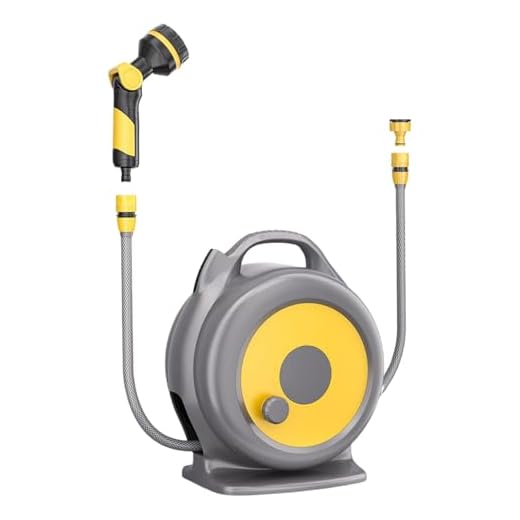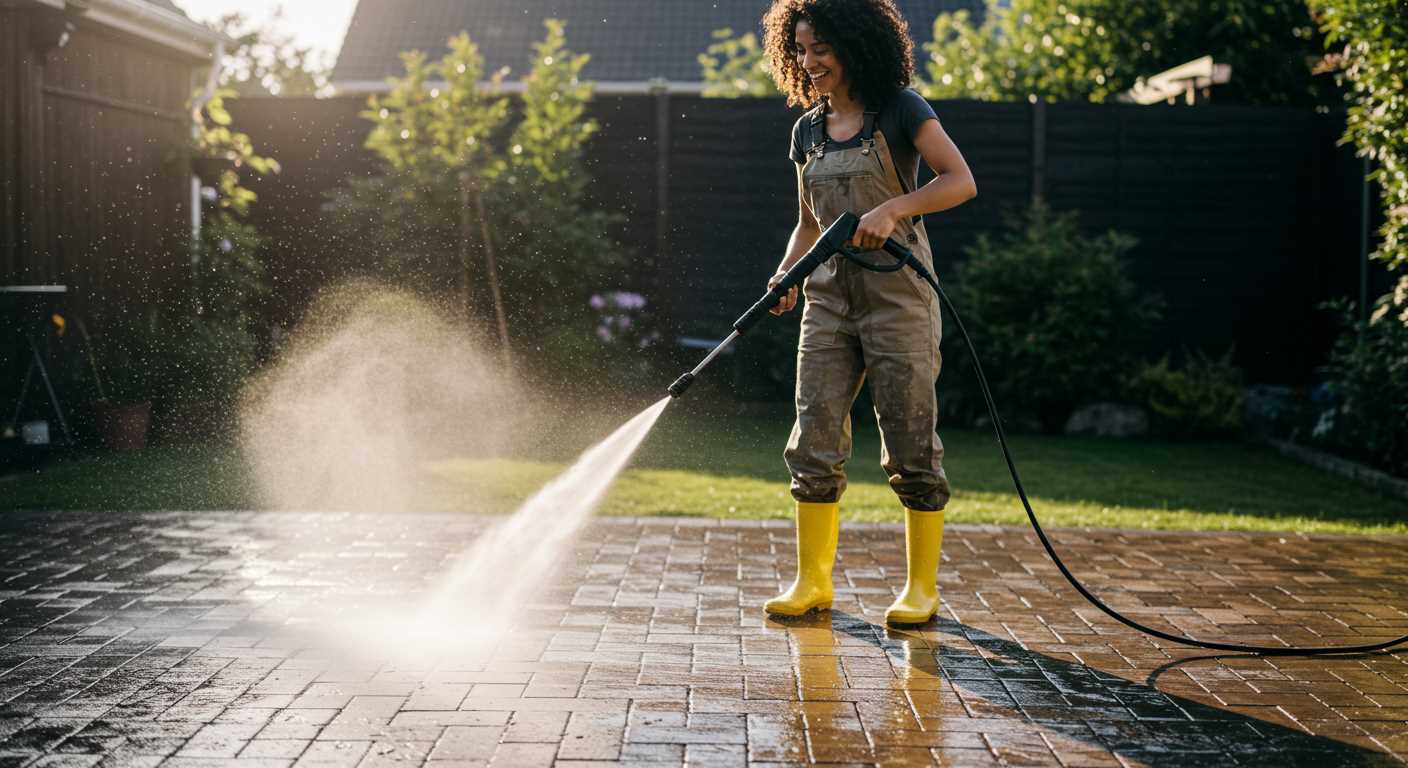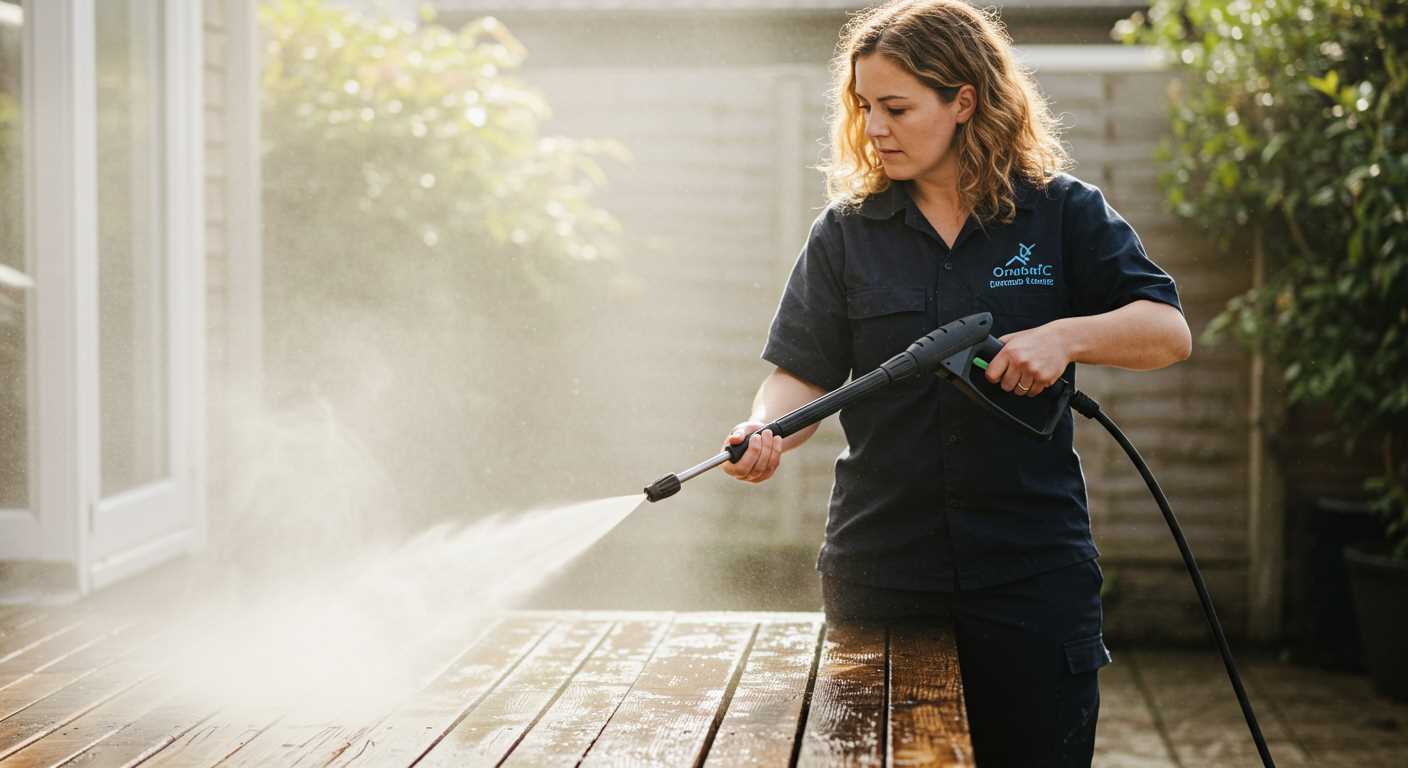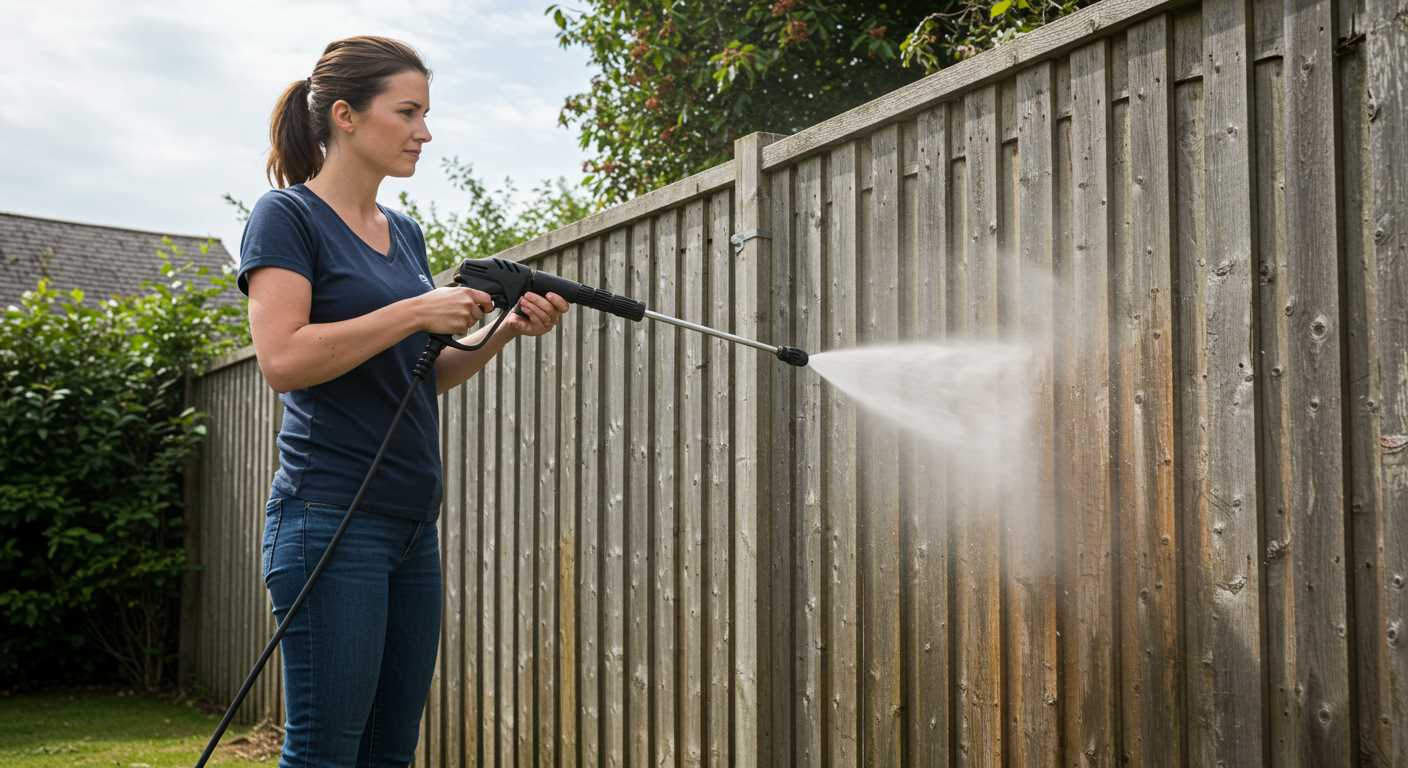



When working with these machines, it’s crucial to regularly inspect and maintain them to prevent failures. A significant number of issues arise from lack of lubrication and care for the pump, leading to overheating and wear. Neglecting this maintenance can lead to costly repairs or replacements.
Another critical point is the selection of the right nozzle. Using an inappropriate nozzle can not only decrease performance but may also cause damage to the pump and other components. Ensure you’re using the recommended nozzle size and type for your specific tasks.
Always be cautious about the source of the water supply as well. Contaminated water can introduce particles that can clog filters and impair functionality. Using a water filter can help keep your machine running optimally and prevent premature breakdowns.
Lastly, operating under the recommended pressure level is vital. Exceeding manufacturer specifications can strain parts and lead to failures over time. Adhering to guidelines not only extends the life of the product but also ensures safety during operation.
Key Factors Leading to Malfunctions in High-Pressure Cleaning Devices
Over time, I’ve observed that improper maintenance is a leading cause of failures in high-pressure cleaning devices. Regularly check and replace essential components such as hoses and seals. Neglecting to do so invites leaks and pressure drops that can severely hamper performance. Each component plays a significant role; wear and tear can manifest quickly if not attended to.
Neglect of Routine Care

To prolong the lifespan of equipment, create a maintenance schedule. Clean filters and nozzles regularly. Blockages can create excessive strain on the motor, often leading to burnout. Take the initiative to inspect connections and fittings; loose parts can result in system inefficiencies and even complete breakdowns. Documentation of maintenance activities helps in keeping track of what has been done and what still requires attention.
Inadequate Usage Techniques
Using inappropriate techniques, such as operating at excessively high temperatures or incorrect pressure settings, can damage internal components. Familiarise yourself with the manufacturer’s guidelines; following these will prevent unnecessary strain on the unit. Be mindful that each task may require specific adjustments to both pressure and flow rate; neglecting this can compromise both performance and longevity.
Understanding Common Pressure Washer Components
Pay close attention to the key components of these machines, as they significantly influence reliability and performance. The pump, for instance, serves as the heart of the system, responsible for generating high pressure. Make sure to choose models with quality pumps, as inferior ones are prone to failure. Opt for brass or stainless steel components for enhanced durability.
The motor is another critical element, impacting both performance and longevity. Electric designs usually require less maintenance, while gas models often pack more power. Keep an eye on the specifications to select based on your cleaning needs. Be wary of overheating; ensure adequate ventilation during use.
Hoses and nozzles may seem trivial but are vital for effective operation. Invest in reinforced hoses to avoid leaks and burst incidents. Nozzles should be regularly checked as wear can reduce cleaning efficiency. Consider a multi-jet nozzle system for versatility across various tasks.
Finally, the detergent injection system plays a pivotal role in enhancing cleaning capability. Regular maintenance ensures that it functions smoothly. Clean out filters and tubing to prevent clogs that could hinder performance.
Identifying Signs of Wear and Tear
.jpg)
Regular observation can prevent potential failures. Start by inspecting the hose for cracks or kinks; these can restrict water flow and lead to overheating. Look for frayed edges or bulges that indicate internal damage. Replace it if you notice any significant wear.
Next, examine the nozzle. A clogged or damaged tip can affect the spray pattern, causing an uneven cleaning experience. Clean or replace nozzles that show signs of corrosion or discoloration. It’s critical to match the nozzle type to the job requirements to ensure optimal performance.
Engine and Motor Checks
Listen attentively to the unit during operation. Unusual noises, like knocking or grinding, often hint at internal problems. Regularly check the oil levels and quality if the model uses a gas engine; contaminated or insufficient oil can lead to severe engine damage. Also, assess the ignition components and filters; cleanliness here can significantly affect starting and running conditions.
Frame and Structural Integrity
Evaluate the structural components. Rust or corrosion on the frame suggests exposure to the elements, which can weaken the machine over time. Check for loose components, including screws and fastenings, which might lead to instability during use. Secure any loose parts to maintain rigidity.
Keeping a watchful eye on these elements can extend the lifespan of the equipment and save you from unexpected breakdowns. Regular maintenance routines not only enhance performance but also ensure safety during operation.
Impact of Poor Maintenance Practices
Regular upkeep significantly extends the lifespan of your cleaning apparatus. I recommend following a strict schedule for servicing to prevent premature wear. Items like filters, hoses, and nozzles require continual inspection for clogs or damage. Replace any parts that show signs of fatigue; this small investment can save you substantial costs down the line.
Fluid Management
Using the wrong type of detergent or neglecting to replace the oil can lead to major issues. Always utilise the manufacturer’s recommended cleaning solutions and regular oil changes. Contaminated or insufficient fluid can cause the motor to overheat, leading to potential failure. Check these levels frequently for optimal performance.
Storage Conditions
How you store the unit plays a pivotal role in its longevity. Exposing it to extreme temperatures or moisture can lead to corrosion and component degradation. Store in a dry, stable environment, ideally covered, to protect from dust and dirt accumulation. Proper storage practices can prevent unnecessary repairs and enhance the device’s functionality.
Maintaining the integrity of connectors and seals is paramount. Simple preventative measures like these can dramatically reduce the likelihood of costly breakdowns and ensure your apparatus remains reliable over time. Be proactive rather than reactive for better long-term performance.
Choosing the Right Equipment for Your Needs
Select based on intended usage to maximise performance and longevity. For residential tasks like cleaning patios or vehicles, an electric model may suffice. If heavy-duty cleaning, such as stripping paint or cleaning large surfaces, is required, opt for a gasoline-powered variant.
Consider the following specifications critical for meeting specific demands:
| Feature | Residential Use | Commercial Use |
|---|---|---|
| Pressure Rating (PSI) | Up to 2000 PSI | Over 3000 PSI |
| Water Flow Rate (GPM) | 1.5 – 2.0 GPM | 3.5+ GPM |
| Power Source | Electric | Gasoline |
| Portability | Lightweight | Heavier-duty, less portable |
Evaluate the range of accessories as well. Nozzles that adjust spray patterns will offer versatility. Additionally, a long hose ensures you can reach distant areas without moving the entire unit. Look for options that come with detergent tanks for added convenience.
Lastly, determine your budget. While it’s tempting to choose the lowest-priced model, remember that higher-priced units often reflect better construction and more durable materials, ultimately saving money on repairs and replacements over time.
Common User Mistakes Leading to Breakdowns
Ignoring the power source’s compatibility is a frequent issue. Always check the voltage requirements to ensure a match with your device to prevent electrical failures.
- Incorrect nozzle selection: Using the wrong nozzle for the task can result in inadequate cleaning or damage to surfaces. Always choose the appropriate nozzle based on the material being cleaned.
- Overheating: Continuous operation without breaks can cause motors to overheat. Follow the recommended usage guidelines to avoid excessive heat build-up.
- Incorrect fluid types: Using non-compatible cleaning solutions can lead to damage. Always use solutions specifically designed for your equipment to maintain integrity.
- Neglecting assembly instructions: Not following manufacturer assembly guidelines can result in improper function. Always review the manual before setting up your unit.
- Water supply issues: Insufficient or inconsistent water flow can lead to pump damage. Ensure a steady water supply before starting your cleaning tasks.
- Inadequate pre-use checks: Failing to inspect hoses, connections, and other components can lead to leaks and other issues. Conduct a thorough check each time before use.
Prioritising these aspects during operation can significantly extend the lifespan of your equipment. Adapt practices accordingly to prevent common user errors that could lead to costly repairs or replacements.
Importance of Proper Water Supply and Quality
Ensure a consistent and adequate water supply with minimal interruptions to maintain optimal function. Low flow rates can lead to overheating, which stresses components and may cause premature failure.
Water quality plays a significant role. Hard water, laden with minerals, can accumulate and cause blockages in hoses and nozzles. Integrating a water softener can mitigate this issue, prolonging the lifespan of the equipment.
Clean water is essential; impurities can lead to impurities clogging within the pump system. Regularly inspect the inlet filter and replace it as needed to guarantee uninterrupted performance. Investing time in maintaining the water source is as crucial as servicing the machine itself.
Monitor the temperature of the water supply. Excessively hot water can lead to seal degradation, compromising the integrity of the unit. Ideally, the water temperature should not exceed the manufacturer’s specified capacity.
Testing the pH level of the water can also reveal crucial insights. Water that’s too acidic or alkaline can corrode internal components. Use neutral pH water to avoid damaging sensitive parts.
Periodic flushing of the system with clean water can help remove any build-up of contaminants, ensuring smooth operation and longevity. Make these assessments a regular part of your maintenance routine to stave off potential issues.
Impact of Seasonal Changes on Pressure Cleaners
Store units indoors during winter months to prevent frost damage. Cold temperatures can cause fluid to freeze, leading to ruptured seals or damaged components. Additionally, humidity increases the risk of rust if equipment is left exposed.
In spring, inspect for any signs of deterioration caused by winter conditions. Check hoses for cracks and ensure all fittings are secure. A thorough clean of the unit helps avoid any blockages that may arise from residues or debris accumulated over the winter.
Summer heat can strain engines, so ensure adequate cooling by allowing the machine to rest periodically during use. Overheating may result in premature wear. Regularly check the oil level and quality, especially when operating frequently in higher temperatures.
Autumn is a prime time to prepare for colder weather. Drain any leftover water from the system to avert freezing damage. Consider a protective cover or storage solution to shield the equipment from falling leaves and moisture.
Seasonal transition affects various components. Keeping up with regular maintenance, tailored to each season, extends the lifespan and functionality of these machines significantly. Adapting care practices to align with environmental changes is critical for optimal performance.
Repair vs. Replace: When to Make the Call

Assessing whether to fix or discard malfunctioning equipment requires a practical approach. Follow these guidelines to make an informed decision.
Evaluate Repair Costs

Begin by analysing repair expenses against the current market value of similar models. If the repair quotes exceed 50% of a new unit’s price, consider replacement. Parts often lead to diminishing returns, especially with older machines.
Check Age and Model Availability
- If your device is over five years old and parts are scarce, replacement might be the more logical choice.
- Research the model’s reliability; frequently problematic units indicate that investing in repairs may not yield long-term benefits.
Inspect Usage Patterns
If frequent breakdowns occur despite proper care, analyse the frequency of use. For heavy-duty tasks, a robust, new model might perform better than continuously repairing a lower-end version.
Consider Future Needs
- Reflect on your evolving requirements. A more powerful or versatile machine could enhance efficiency for upcoming projects.
- Assess the environmental impact of disposing of older equipment versus extending its life through repairs.
Making a choice between repair and replacement hinges on these pragmatic aspects, ensuring you optimise both performance and investment.







